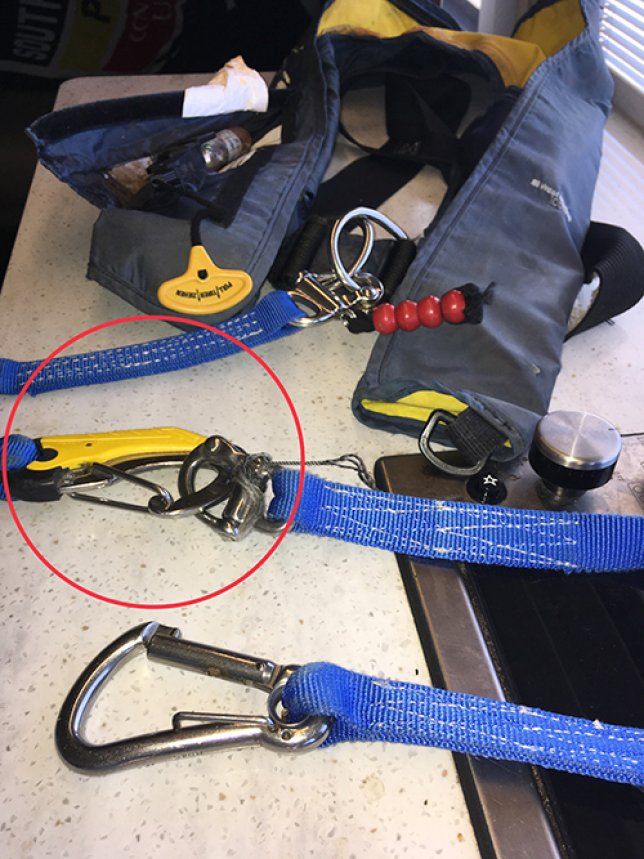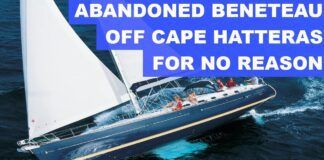We recently talked about the tremendous forces at work when a person goes overboard (see PS December 2018, Leg Straps Put the Load on Fanny). Monterey Bay sailor Jack Davies, 63, who is lucky to be alive, felt those forces firsthand.
Davies set out in his Ericson 35 Ean na Mara for a winter sail from Monterey Harbor to Point Pinos about three miles away and back. On the return leg, with sunset closing in, he started having engine troubles. The events that followed were harrowing.
Unable to make headway in the light winds against the heavy winter swell, he was pushed toward a rocky point. Before he could tack away, a breaking wave rose far above his boat, broke and washed Davies overboard. A video of the wave and the Ericson’s terrifying trajectory down the face of it is on a YouTube post that Davies has created. Captured by a bystander on shore, the video is a wake-up call for anyone who has been lulled into a sense of complacency. As Davies described in his written account of the accident:
One wave curled and broke above me, washing me overboard and breaking my tether safety line. I was submerged for 15-30 seconds until I came to the surface and manually activated my life vest.
Just as it appeared he would be dashed on the rocks, a rip current sucked him outside the break where a rescue boat was waiting. He had been in the water approximately 15-30 minutes and was hypothermic but still conscious.
Davies found a number of lessons from the experience, which he shares in the video.
The list is long in this case, but one item in particular stood out, since it is a topic we’ve paid particularly close attention to over the last couple of years-safety tether equipment and their use.
Davies unwisely decided to join two tethers to make on long, 12-foot tether. Instead of killing him, though, the force of his flying body being jerked back bent his tether hook and broke the jackline, sending him into the water.
LESSONS LEARNED
- Davies was alone without autopilot and did not have the skills to leave the helm to drop or reef the sail, deploy the anchor, or even make an emergency call on the radio alone.
- Davies had checked (but not changed) the CO2cartridge in his
inflatable life vest in the last few years. Precious minutes passed before he was able to activate his manually inflatable PFD in the water. An automatic life-vest (with manual option), would have offered more security. - Alone, and with non-functioning running lights, he was unprepared to sail at night, but left for sailing just two hours before sunset. This forced him to make a hasty action plan.
- His diesel engine was recently repaired, but the starter is still balky. The engine should have been considered unreliable and the boat operated with that in mind.
For more lessons learned see Davies post at the Monterey Peninsula Yacht Club website, which also has a link to the video of the accident and the
aftermath (https://mpyc.org/index.php/activities/cruising/740-shipwrecked-in-monterey).







































I have been a reader of PS for many years before starting our circumnavigation on a new HR 48 two years ago. Can you advise me on a good brand USA made 10 mm anchor chain? Our expensive SS chain made by German Ketten Welder is slowly falling apart. I cannot find any current leak on the windlass.
Darrell, I just came across your well written article, “A Dangerous Way to Learn” (2019). Sometimes experience is the best teacher if one survives. I hope your article will help prevent a similar occurrence. The purpose of a lanyard is to stay on the deck, NOT to drag you behind the boat like a water skier! I’m still suffering PTSD from the trauma but have much greater respect for the ocean. Be smart and be safe, Cap’n Jack (retired)